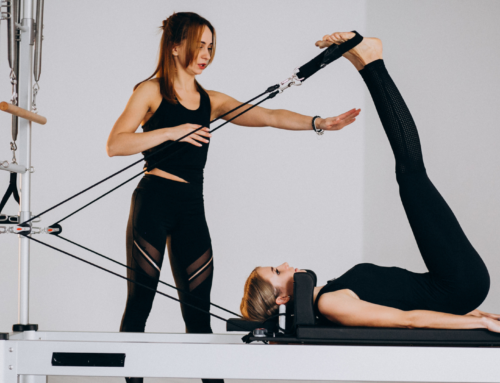Groin injuries are common, especially among athletes and active individuals. These injuries can significantly hinder mobility and daily activities, making it essential to understand their causes, symptoms, and treatment options. Physiotherapy plays a crucial role in the effective management of groin injuries, ensuring a comprehensive recovery process. This blog post delves into the various aspects of groin injuries, including their causes, symptoms, treatment methods, and the importance of physiotherapy in their management.

Causes of Groin Injuries
Groin injuries often result from activities that involve sudden movements, heavy lifting, or overuse of the muscles in the groin area. Common causes include:
- Muscle Strains:
- Overstretching or tearing of the adductor muscles (the muscles of the inner thigh) due to sudden changes in direction or intense physical activity.
- Common in sports such as soccer, hockey, and basketball, where quick lateral movements are frequent.
- Sports Hernia:
- Also known as athletic pubalgia, it involves a tear or strain in the soft tissue of the lower abdomen or groin area.
- Often occurs in sports that require repetitive twisting and turning motions.
- Hip Joint Issues:
- Conditions like hip cartilage tears can cause referred pain in the groin area.
- These conditions often stem from structural abnormalities or repetitive stress on the hip joint.
- Osteitis Pubis:
- This condition occurs becuase of inflammation of the pubic symphysis (the joint between the two halves of the pelvis) due to repetitive stress or trauma.
- Common in long-distance runners and soccer players.
- Inguinal Hernia:
- Occurs when a portion of the internal organs protrudes through the abdominal wall in the groin area.
- Can result from heavy lifting, persistent coughing, or obesity.
- Nerve Entrapment:
- Compression or irritation of nerves in the groin area can cause pain.
- May result from trauma, surgical complications, or anatomical abnormalities.
Symptoms of Groin Injuries
Common symptoms include:
- Pain:
- Sharp or dull pain in the groin area, often exacerbated by movement or physical activity.
- Pain may be localized or radiate to the inner thigh or lower abdomen.
- Swelling and Bruising:
- Swelling and bruising around the groin area, indicating inflammation or tissue damage.
- Stiffness and Limited Range of Motion:
- Difficulty moving the hip or leg due to stiffness and reduced flexibility.
- Weakness:
- Weakness in the groin or inner thigh muscles, making it challenging to perform everyday activities or sports.
- Popping or Snapping Sensation:
- A sensation of popping or snapping in the groin area during movement, which may indicate a tear or strain.
- Tenderness:
- Tenderness when pressing on the affected area, suggesting inflammation or muscle strain.
Diagnosis of Groin Injuries
Proper diagnosis of groin injuries involves a combination of medical history, physical examination, and imaging techniques:
- Medical History:
- A detailed medical history, including the onset of symptoms, recent activities, and any previous injuries, helps in identifying the potential cause.
- Physical Examination:
- A thorough physical examination to assess the range of motion, muscle strength, and areas of tenderness.
- Specific tests, such as the adductor squeeze test, can help identify muscle strains.
- Imaging:
- X-rays: Used to rule out fractures or structural abnormalities.
- MRI and Ultrasound: Provide detailed images of soft tissues, helping to identify muscle tears, hernias, or other soft tissue injuries.
Treatment Options for Groin Injuries
The treatment of groin injuries depends on the severity and specific type of injury. Treatment options range from conservative approaches to surgical intervention:
- Conservative Treatments:
- Rest: Avoiding activities that exacerbate pain and giving the affected area time to heal.
- Ice: Applying ice packs to reduce swelling and pain.
- Compression: Using compression garments or bandages to support the injured area and reduce swelling.
- Elevation: Keeping the leg elevated to minimize swelling.
- Medications: Over-the-counter pain relievers like ibuprofen or acetaminophen to manage pain and inflammation.
- Physiotherapy:
- Physiotherapy is essential in both the initial treatment and long-term management of groin injuries. A physiotherapist will design a personalized rehabilitation program to restore function, improve strength, and prevent future injuries.
- Surgical Treatments:
- Sports Hernia Repair: Surgical repair of torn or strained soft tissues in cases of sports hernia.
- Inguinal Hernia Repair: Surgical intervention to correct inguinal hernias.
- Hip Surgery: Procedures to address hip labral tears or other hip joint issues causing referred groin pain.
The Importance of Physiotherapy in Managing Groin Injuries
Physiotherapy plays a pivotal role in the effective management of groin injuries, whether treated conservatively or surgically. Here’s how physiotherapy contributes to recovery:
- Pain Management:
- Physiotherapists use modalities such as ice, heat, and electrical stimulation to reduce pain and inflammation.
- Restoring Range of Motion:
- Gentle stretching and mobilization exercises help restore flexibility and range of motion in the hip and groin area.
- Strengthening Muscles:
- Strengthening the muscles around the groin, hip, and core is crucial for stabilizing the area and preventing future injuries. Physiotherapists guide patients through tailored strengthening exercises.
- Improving Balance and Proprioception:
- Exercises to enhance balance and proprioception (the body’s ability to sense its position in space) are incorporated to improve stability and function.
- Functional Training:
- Functional training focuses on restoring the ability to perform daily activities and sports-specific movements. This helps ensure a safe return to normal activities and sports.
- Preventing Recurrence:
- Education on proper body mechanics, posture, and injury prevention techniques helps reduce the risk of future groin injuries.
- Post-Surgical Rehabilitation:
- For patients who undergo surgery, physiotherapy is essential for post-operative rehabilitation. It helps restore strength, flexibility, and function, ensuring a smooth recovery process.
4o






